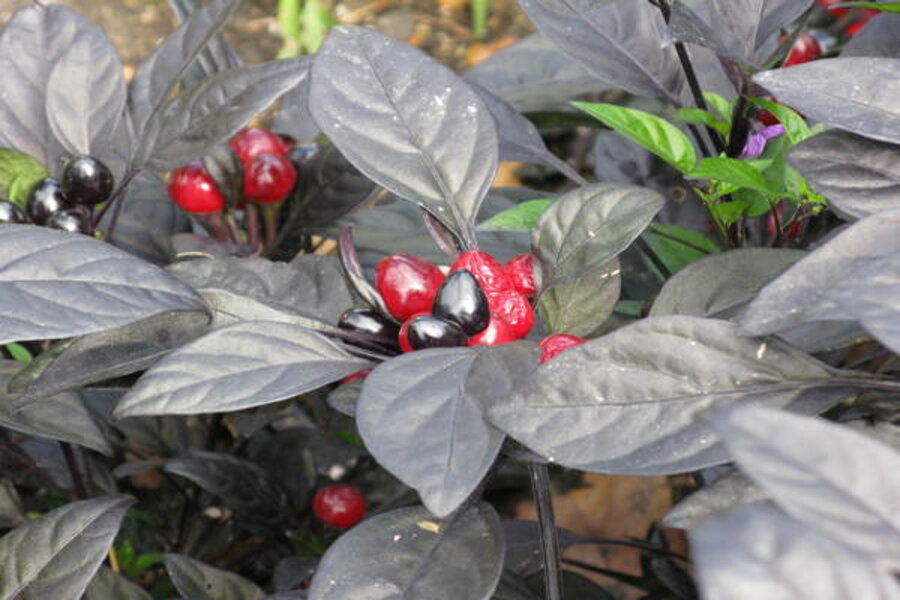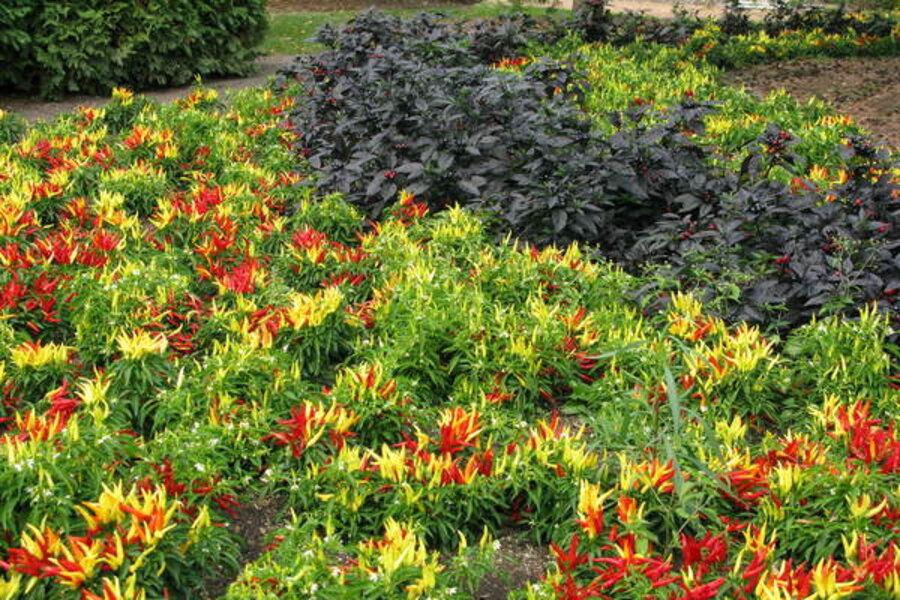Spice up your garden with ornamental peppers
Loading...
Looking for a hot landscape plant? Plan to spice up your yard with ornamental peppers next year.
After visiting a couple of gardens where vegetables, grown not only for the produce but for their ornamental value as well, were gracefully incorporated into various beds and borders, I decided to add a few “ornamental” veggies into my own landscape,
Though I’m quite pleased with my minuscule additions -- primarily Swiss chard, chives, and parsley -- a recent visit to Cantigny Gardens, in Wheaton, Ill., made me sit up and take notice:
Wow, a glorious bed chock full of ornamental peppers!
Now, I’m a pepper fanatic. Love them in, on, and with just about everything — grilled, sautéed, or pickled.
That said, however, I’m sure I’ve never picked a peck of pickled peppers – and I don’t think Peter Piper was even aware of the existence of any ornamental peppers – but if Peter could pick some ornamental peppers today, he’d have more than a peck of incredible cultivars to choose from.
Members of the Capsicum annum family, ornamental peppers come in a variety of sizes, fruit colors, plant habits, foliage colorations, and varying degree ratings of “heat.”
Generally, ornamental pepper is the term given to pepper plants that are extremely attractive, and thus grown in the garden for their aesthetic value. But these beauties are also edible – although most are generally fiery hot, way too hot for people’s tastes. (Heat is measured in Scoville Units.)
Edible beauty
Ornamental peppers are amazingly beautiful, and one of the most alluring traits of these plants is the delightfully colored fruit that most hold upright above the foliage. It’s as if the plant is showing-off a bit with its kaleidoscope of flashy fruit.
And because they hold their fruit for extended periods of time, ornamental peppers are not only great additions for container gardening, incorporated into beds and borders, or used as nontraditional ground covers, but once temperatures fall below 55 degrees F. (13 C), they can be brought indoors to continue their multicolored pageantry as fun and funky houseplants.
Some of the more popular varieties include
Also excellent is the Explosive series –
At Cantigny, Chilly Chili and Black Pearl, both All America Selection Winners (AAS) – Chilly Chili in 2006 and Black Pearl in 2002 – are gorgeous examples of the “hot” and the “not-so-hot.” (To receive the AAS award, a cultivar must show “superior garden performance”.)
The beautiful Black Pearl is very hot; while Chilly Chili, as the name implies, has little or no heat, and thus, is classified as “child-safe” according to the 2003 Ohio State University Ornamental Pepper Cultivar Trials.
[Note: The first photo at top shows Black Pearl, click at the bottom to see the second photo, of Chilly Chili, and for the third photo, showing the variety of fruits on ornamental peppers.]
Sure-fire color
Chilly Chili is a compact ornamental pepper that produces a heavy load of mild, two-inch long, erect chilies. The fruit starts out chartreuse, changes to orange and finally to a deep, waxy red, becoming ever more beautiful as the season progresses.
Long after the growing season is over, if the colorful red and yellow fruit of Chilly Chili is dried, the fruit can be used for indoor decorations.
Black Pearl, on the other hand, is sought after for its deep purple, almost black leaves. If started or grown indoors, the leaves will start out green, but once exposed to the sun the color quickly deepens.
Intermixed among the very distinctive semiglossy, deep purple to black leaves are scores of half-inch, perfectly round fruit, which start out as shiny, black-purple “pearls” eventually maturing to glistening orbs of fire-engine red.
Black Pearl, a true pirate’s treasure in the garden, grows to about 18 inches in height and 12 to 16 inches wide.
Like all peppers, these varieties love hot weather and are extremely drought tolerant. They are adaptable to any full-sun location and excellent in patio containers.
These photogenic ornamental peppers tolerate our hot and humid Midwestern summers and still exhibit great color when other plants have faded.
Feed your peppers with a complete garden fertilizer, such as 10-20-10 at three-to-four-week intervals. Or, if you prefer, you can also use dilute, water-soluble fertilizer every other week.
-----
Betty Earl, the Intrepid Gardener, is one of nine garden writers who blog regularly at Diggin' It. She's the author of “In Search of Great Plants: The Insider’s Guide to the Best Plants in the Midwest.” She also writes a regular column for Chicagoland Gardening Magazine and The Kankakee Journal and numerous articles for Small Gardens Magazine, American Nurseryman, Nature’s Garden, and Midwest Living Magazine, as well as other national magazines. She is a garden scout for Better Homes and Gardens and a regional representative for The Garden Conservancy. To read more by Betty, click here.







